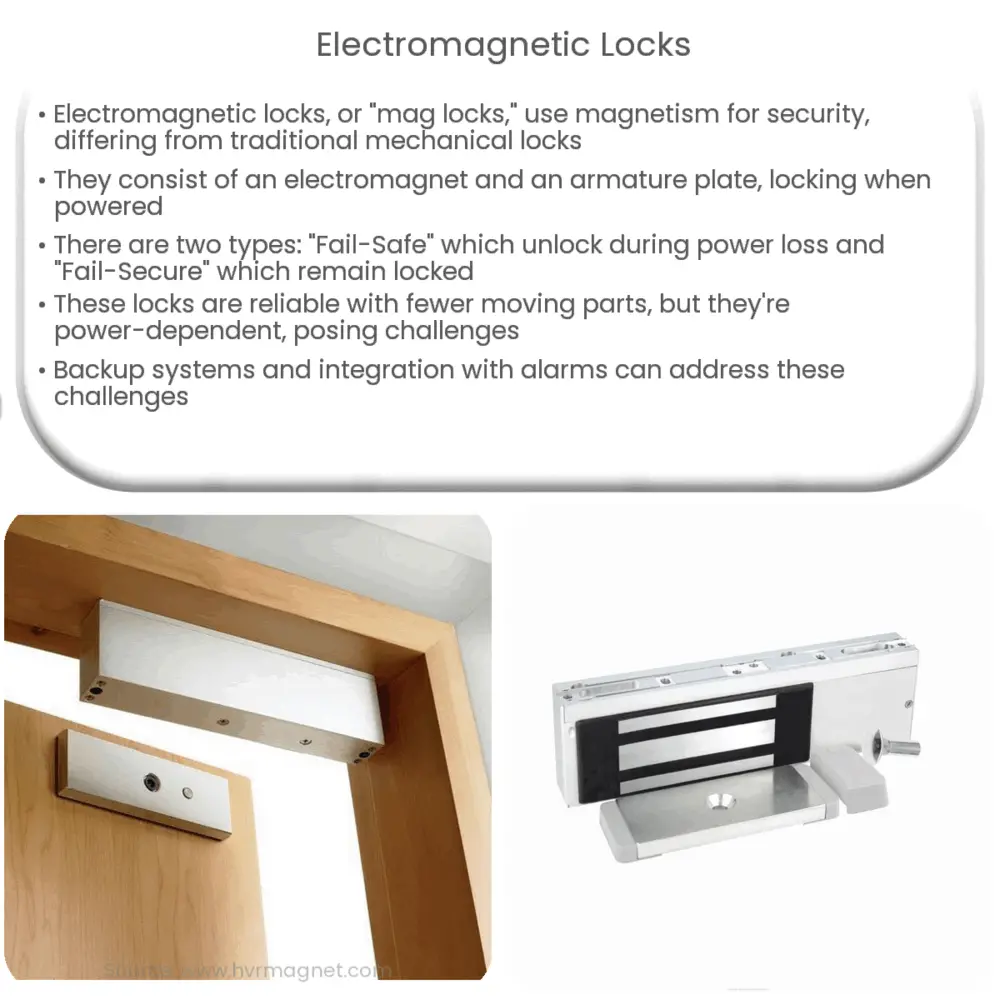Explore the world of electromagnetic locks: understand their working principles, types, benefits, challenges, and solutions in our comprehensive guide.

Introduction to Electromagnetic Locks
Electromagnetic locks, often referred to as “mag locks” or “EM locks,” represent an exciting piece of security technology utilized in numerous security systems around the world. While traditional locks rely on mechanical components, electromagnetic locks take advantage of the principles of magnetism to secure doors and entryways. Let’s dive in to understand more about how these ingenious devices function.
Working Principle of Electromagnetic Locks
The fundamental operation of electromagnetic locks is based on the simple principles of electromagnetism. At the heart of every electromagnetic lock are two primary components: an electromagnet and an armature plate. The electromagnet is usually attached to the door frame, and the armature plate is affixed to the door itself.
When the electromagnet is powered and a current flows through it, it produces a magnetic field that attracts the armature plate, thereby locking the door. When the power is cut off, the electromagnetic field collapses, and the door unlocks. This simple yet effective principle provides robust and fail-safe security.
Types of Electromagnetic Locks
- Fail-Safe Locks: Fail-safe locks are designed in such a way that when the power to the electromagnetic lock is cut off, the door unlocks. This is a safety measure designed to ensure that people can escape in case of a power failure or an emergency.
- Fail-Secure Locks: Fail-secure locks, on the other hand, stay locked even when power is lost. These types of locks are often used in high-security areas where it’s critical that doors remain secured, even during a power outage.
Advantages of Electromagnetic Locks
- Electromagnetic locks do not have moving parts, reducing wear and tear, and consequently, maintenance costs.
- Their simple design and operation make them reliable and less likely to fail compared to mechanical locks.
- They can be integrated into an access control system, providing enhanced control over who can access a particular area.
- Fail-safe electromagnetic locks ensure safety during emergencies, allowing for quick evacuation.
Despite these benefits, it’s also essential to note that electromagnetic locks have their own set of challenges and considerations. We’ll delve into those, along with potential solutions, in the following section of this article.
Challenges and Considerations
While electromagnetic locks offer numerous benefits, they also present unique challenges that users need to consider.
- Power Dependency: Since electromagnetic locks require an electric current to function, a power failure can render fail-safe locks insecure. Conversely, fail-secure locks may trap people within a secured area during power outages. To mitigate this, backup power systems or manual override systems are often employed.
- Physical Force: Although they’re incredibly strong when engaged, electromagnetic locks are susceptible to physical force when the power is turned off, or when there’s a failure in the power supply.
- Fire Safety Regulations: Depending on local fire safety regulations, the use of electromagnetic locks may be restricted or require additional safety measures, such as integration with a fire alarm system to ensure doors unlock in case of a fire.
Potential Solutions
The challenges associated with electromagnetic locks are not insurmountable. Proper planning and integration with other systems can help overcome these issues.
- Backup Power: A reliable backup power supply, such as a battery system, can ensure that fail-safe locks remain secure during power outages. Similarly, fail-secure locks can be coupled with manual override systems to ensure safety during emergencies.
- Reinforced Doors: To mitigate the risk of forced entry, electromagnetic locks can be installed on reinforced doors that are designed to resist physical force.
- Integration with Fire Alarm Systems: Electromagnetic locks can be integrated with fire alarm systems to automatically disengage in the event of a fire, ensuring safety regulations are met.
Conclusion
Electromagnetic locks provide a modern and robust solution to many security needs. Their simple design, reliability, and adaptability make them an appealing choice for a wide range of applications, from office buildings to high-security facilities. While they present unique challenges, with careful planning and the right supporting infrastructure, these issues can be addressed effectively. As technology continues to advance, the features and capabilities of electromagnetic locks will likely further evolve, presenting even more opportunities for their use in the future.



